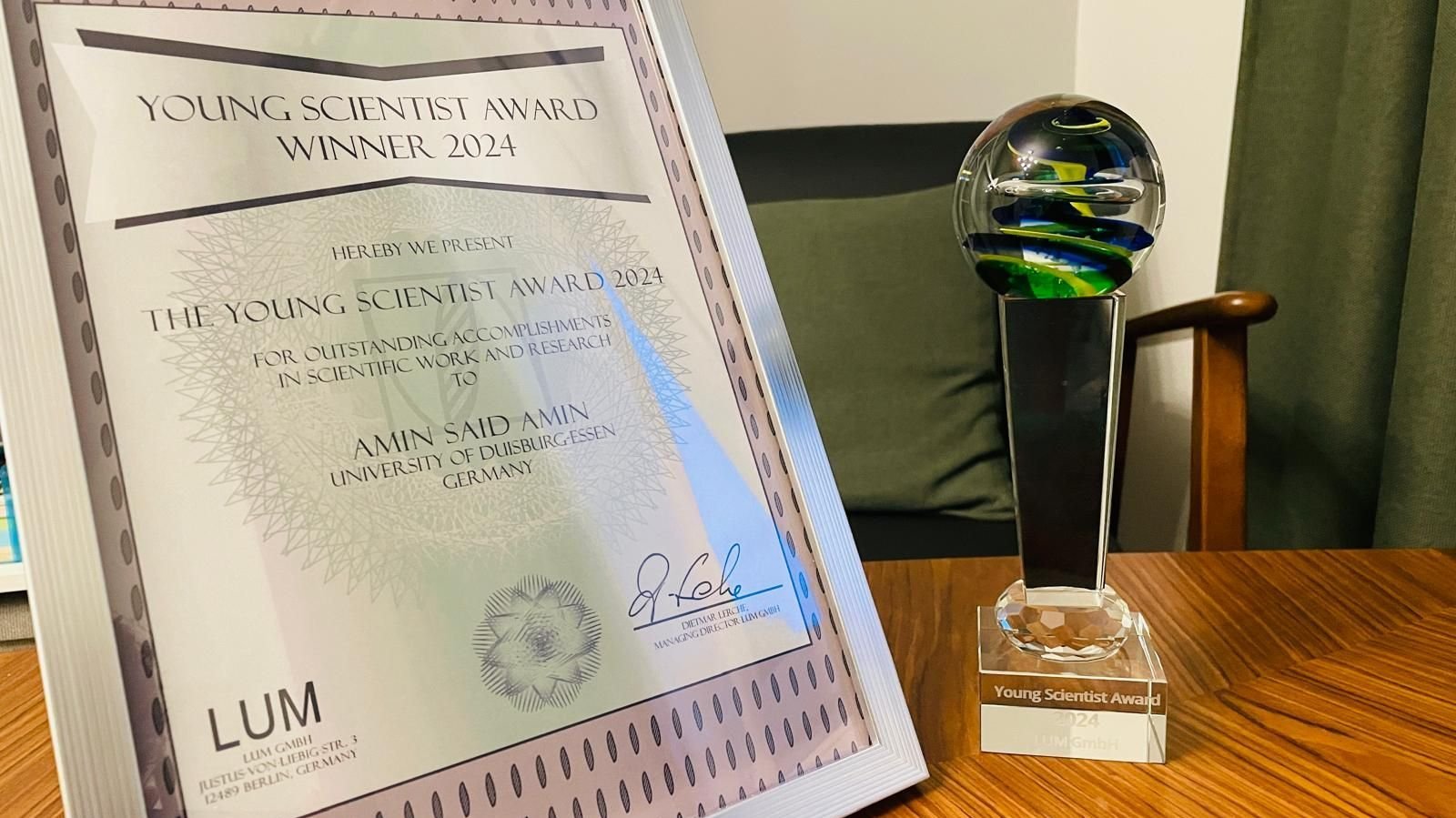News
Young Scientist Award 2024And the Winner is... CENIDE member Amin Said Amin!
Among the 70 competent participants from 14 countries worldwide, the three selected finalists presented their research results to the public and the jury.
At the 11th International Conference on Dispersion Analysis and Materials Testing, organized by LUM GmbH from 10 to 12 June in Berlin, CENIDE member Amin Said Amin received the Young Scientist Award 2024 for his research on particle surface properties and their understanding.

M. Sc. Amin Said Amin was selected as a Young Scientist 2024 for his work 'Developing a Methodology for Systematic Selection of Probe Liquids to Determine Hansen Solubility Parameters for Carbon Black materials', which he carried out at the Institute of Energy and Material Processes - Particle Science and Technology (EMPI-PST), University of Duisburg-Essen, in Duisburg.
About the research:
Hansen solubility parameters (HSP) or Hansen dispersibility parameters (HDP) are essential for understanding the dispersion of particles in liquids as they determine the surface properties of nanoparticles. These parameters play a crucial role in the development and design of electrodes, electrolytes and other important components of electrochemical systems. Conventional methods for determining the HDP of nanoparticles involve sedimentation techniques that require a variety of liquids with different HSP, which can be time-consuming and sometimes environmentally harmful.
To solve this problem, Amin and his team developed a two-step strategy that allows for a more systematic selection of fewer liquids. They carried out their investigations using the LUMiSizer analytical multi-sample centrifuge, and with this new approach, Amin and his team were able to reduce the amount of liquid required for the experiments from over ten to a maximum of seven. This reduction was achieved through a precisely defined, coherent methodology. Importantly, despite the reduced number of sample liquids, the HSP values for carbon black remained largely unchanged.
In addition to carbon black, the validation process also included various other materials, including non-pigmented nanoscale titanium dioxide, silicon/carbon composites and lanthanum cobaltite particles. These materials are commonly used in applications such as fuel cells, batteries, cyclohexene oxidation, catalytic combustion, photocatalysis and heterogeneous Fenton reactions.
In his speech, Prof. Dr. Dr. Lerche, chairman of the scientific conference, emphasized the importance of Amin Said Amin's contributions. He pointed out that Amin's work continues the legacy of previous award winners from Israel (2014), the Netherlands (2015), Australia (2016), Germany (2016, 2018, 2019) and Brazil (2022). Amin's innovative experimental approach demonstrates the potential of analytical centrifugation for the characterization of particle surfaces and enables successful application while significantly reducing or even eliminating environmentally harmful effects and health risks. The results of Amin's research have been internationally recognized and published in ChemCatChem.
Other finalists:
Théo Merland from France discussed his work on aqueous fullerene suspensions. The two methods developed by Merland and his team for dispersing large amounts of fullerene in water were met with great interest.
Priyabrata Sahoo from India was nominated for his research on "Interfacial Properties Dominate over Bulk Solvent Properties in Liquid Phase Exfoliation (LPE)". Thanks to Sahoo and his team, there are now new insights into the role of the solvent-solvent interface in the LPE of 2D materials and dispersion stabilization. Topics that are of great interest across disciplines, as the intensive discussion showed.
Further information:
Prof. Dr. Doris Segets, Head of AG Segets, doris.segets@uni-due.de
To the article in the F&S Journal

